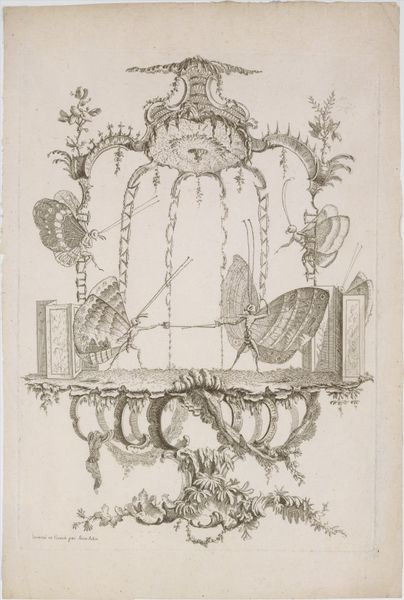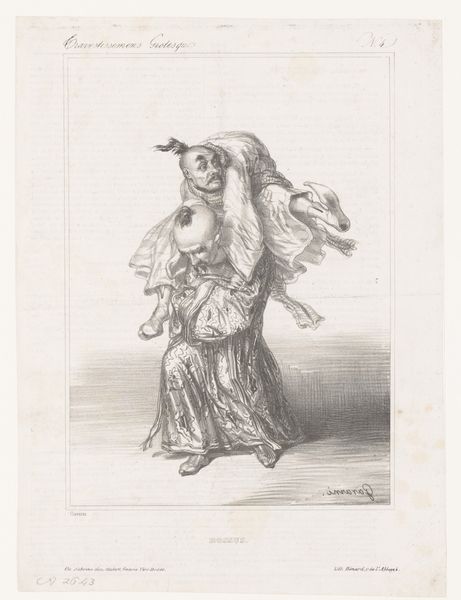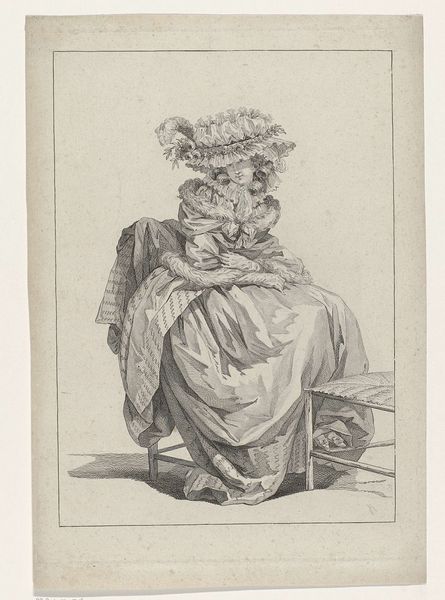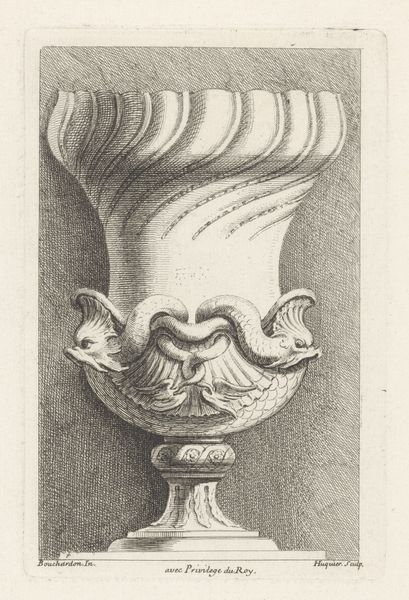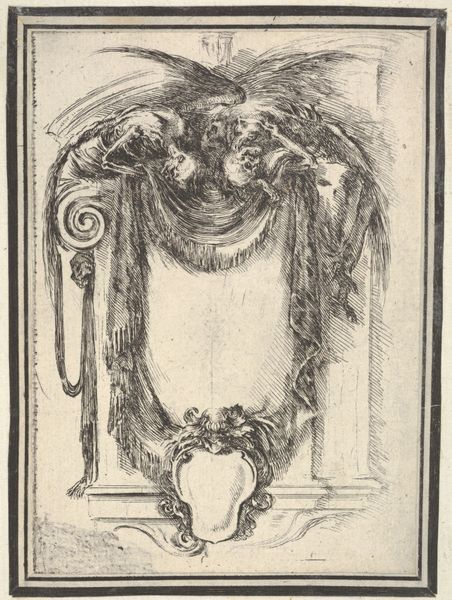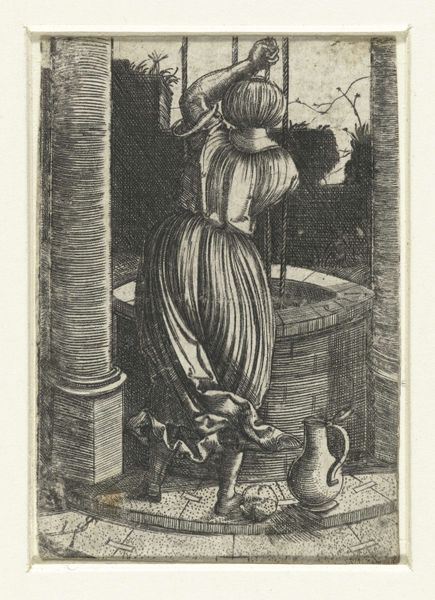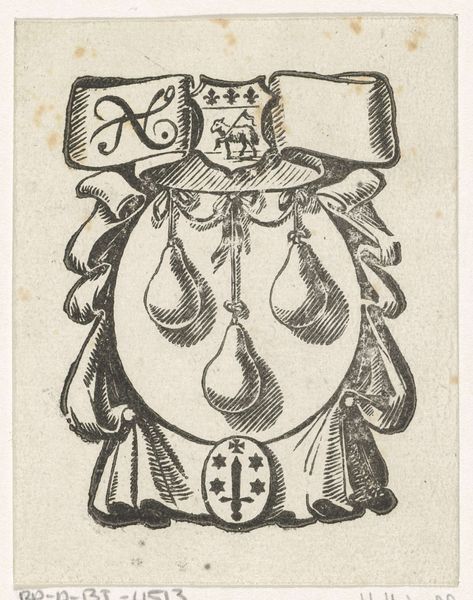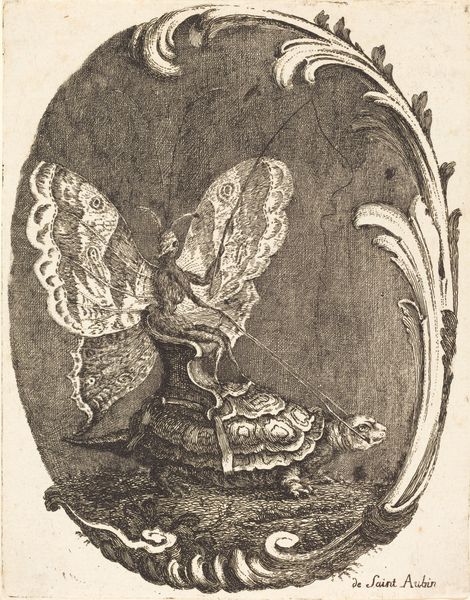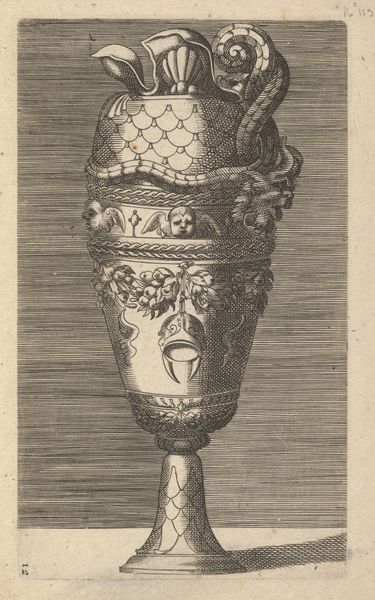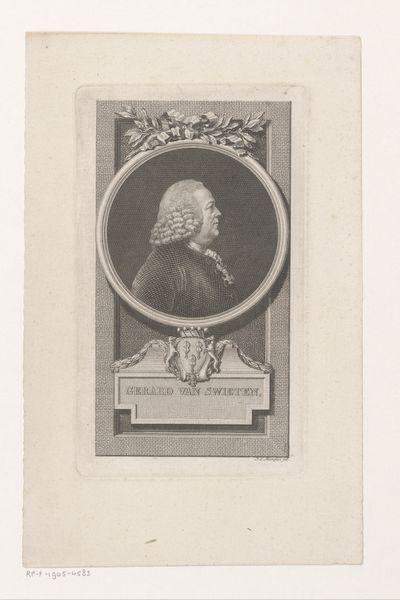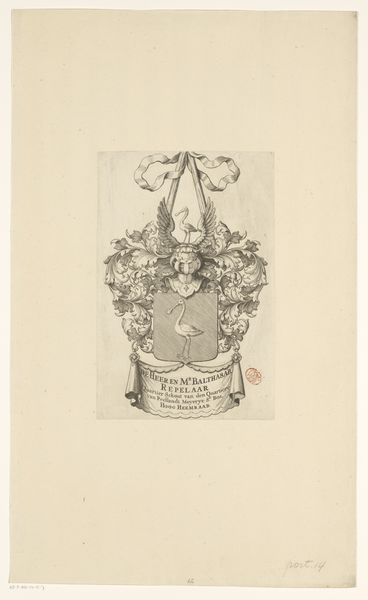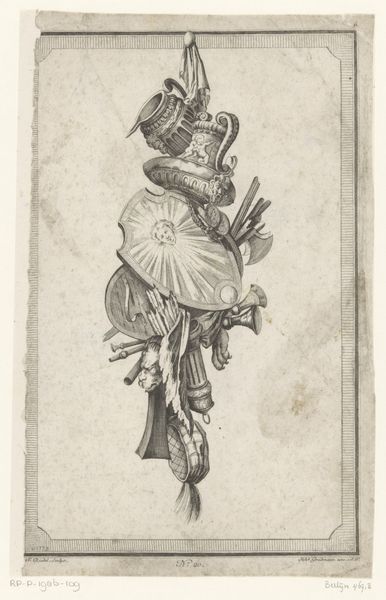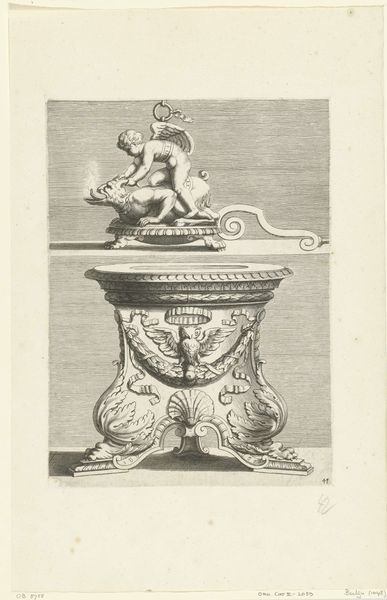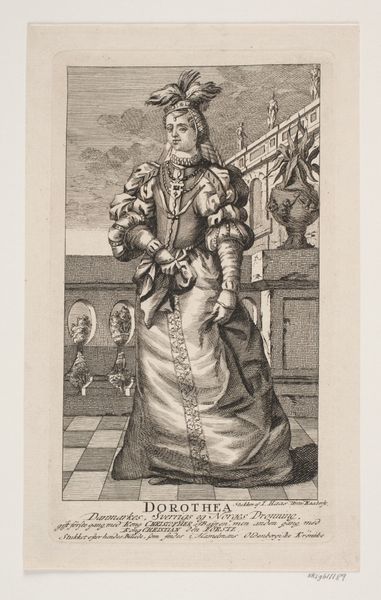
engraving
#
baroque
#
old engraving style
#
decorative-art
#
engraving
Dimensions: height 198 mm, width 131 mm
Copyright: Rijks Museum: Open Domain
Editor: Here we have "Vase with Sphinxes," an engraving made between 1729 and 1737 by Gabriel Huquier. It's teeming with classical motifs, but something about the rigidity of the engraving style makes it feel almost austere to me. What do you make of the imagery presented here? Curator: It's fascinating how these baroque elements speak across time. Notice the sphinxes, figures borrowed from Egyptian and Greek mythology. Winged, often guardians, and poised between worlds. They bring echoes of ancient wisdom and mystery. Editor: Yes, and the ram's head with a serpent intertwined seems potent. Curator: Precisely. The ram, a symbol of virility and power, is juxtaposed with the serpent, which can signify healing, poison, life, and death. Consider how these symbols might interact within the cultural memory. What stories or beliefs might a viewer from that period have associated with these images? Editor: Perhaps an evocation of controlled power and hidden knowledge, something respected and feared? Curator: Exactly! It is an era where such visual language permeated culture. These motifs would not simply be decorative; they carry an immense weight of social, religious, and philosophical underpinnings, creating visual connections to ancient values. How does this change your perspective on the austerity you first perceived? Editor: It makes the engraving far richer, understanding how deeply symbolism permeates every detail. Thanks! Curator: Indeed, recognizing symbols enables us to have conversations across centuries. A powerful exercise in deciphering cultural memory!
Comments
No comments
Be the first to comment and join the conversation on the ultimate creative platform.
